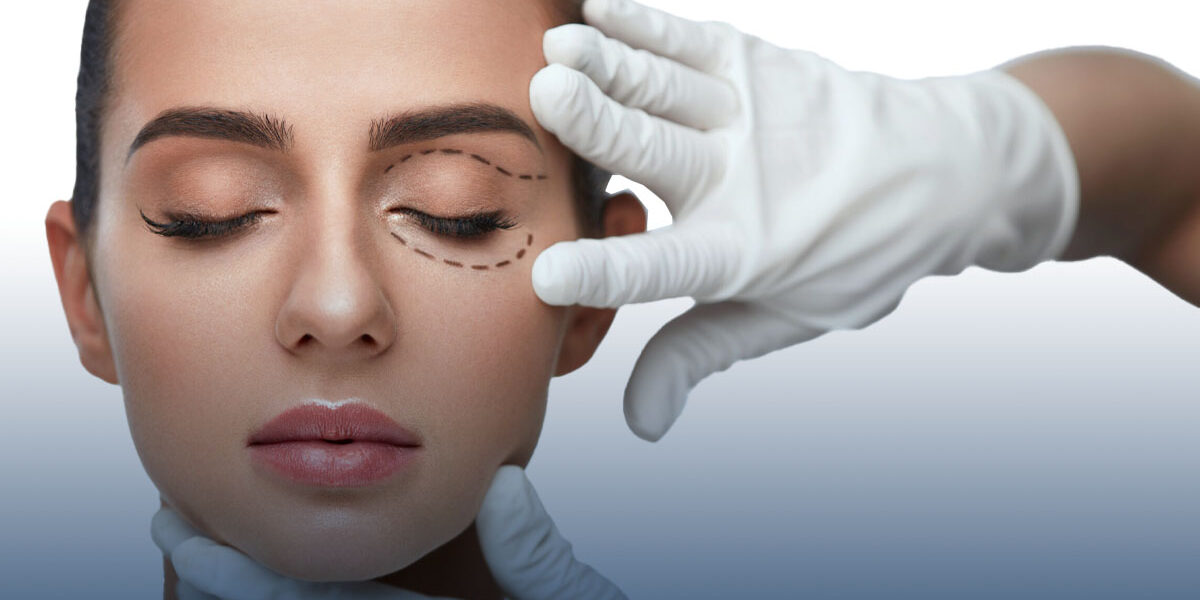
What is Blepharoplasty (Eyelid surgery)?
As the muscles that support the eyelids weaken over time, tension occurs. This leads to the formation of skin or fatty tissue above and below the eyes. This can lead to sagging of the eyebrows and upper eyelids and bags under the eyes. Blepharoplasty, also known as eyelid surgery, is a procedure performed to correct age-related sagging of the eyelids.
As drooping eyelids, which can affect vision, can also be unattractive, this operation is also a cosmetic procedure. Blepharoplasty is therefore a procedure that can completely eliminate vision problems.
What are the symptoms of eyelid ageing?
As the skin ages, it loses its elastic structure and becomes loose, causing sagging in certain parts of the face. The first and most common area to lose elasticity is around the eyes. The first symptoms of sagging around the eyes are a tired and unhealthy appearance. Other symptoms include,
- Lachrymal sacs (bagging) under the eyes
- Low upper eyelid
- Face always looking tired
- Laxity and wrinkles around the eyelid
- Deep crow’s feet at the corners of the eyes
- Palpable excess skin on the eyelids is one of the symptoms of eyelid sagging.
Who can have Blepharoplasty?
Blepharoplasty is a surgical procedure used for people who have sagging eyelids due to aging, which can cause vision problems. Blepharoplasty can also be used for people who have sagging eyelids as a result of genetics, illness or an accident, if the doctor thinks it is appropriate.
If you have problems with sagging and puffiness around your eyes, you can be examined by the doctors at Üsküdar Private Hürrem Sultan Hospital and start your treatment process.
How is blepharoplasty performed?
Before blepharoplasty, the patient is examined to determine if he or she is suitable for the procedure. If the patient is suitable for the surgery, the procedure is started.
First, the steps to be taken for blepharoplasty are determined by drawing and measuring before the operation. Then, while the scalpel or cautery is used to make the incision for the upper eyelid procedures, the transconjunctival or subciliary method is used for the lower eyelid. After that, separate procedures are applied for the upper eyelid and lower eyelid. These procedures can be described in detail as below:
Upper eyelid surgery: This procedure, which is usually performed under local anaesthetic, takes about 45 minutes. Small incisions are made in the upper eyelid fold and excess skin and fat is removed. Sutures are then used to close the incisions. As the stitches remain under the skin fold, no scarring occurs.
Lower eyelid surgery is performed under general or local anaesthetic, depending on the patient’s condition. The procedure, which lasts about 1.5 hours, involves cutting and removing excess skin and excess fat.
What should be considered after Blepharoplasty?
After blepharoplasty, the patient is monitored for a while. If there are no problems with the checks, the patient can be discharged the same day. Although the procedure is simple and painless, swelling of the eyelids is a natural process. For this reason, the patient is advised to rest at home for at least a week to prevent infection and to facilitate daily activities.
Other than that, after surgery
- Puffy, numb eyelids
- Pain or discomfort
- Sensitivity to light are normal process. During the healing process, these effects diminish over time.
Frequently Asked Questions About Blepharoplasty
Eyelid surgery is a permanent procedure and its effects last for at least 10-15 years. However, as the skin loses its elasticity over time, depending on the patient’s skin type, sagging may recur.
Rest at home is recommended for the first week after blepharoplasty, but the redness and swelling caused by the operation will decrease from the third day onwards. Cold compresses can be used to speed up the healing process, as advised by your doctor. After the operation, the stitches can be removed on the third day and the stitches are removed a week later. The healing process is completed within 1 month.
There is no specific age limit for blepharoplasty. Although it is an age-related problem, drooping eyelids can occur at a young age for genetic reasons. For this reason, anyone who is indicated to be suitable for the operation can undergo blepharoplasty.
There is no preferred month or season for blepharoplasty.
